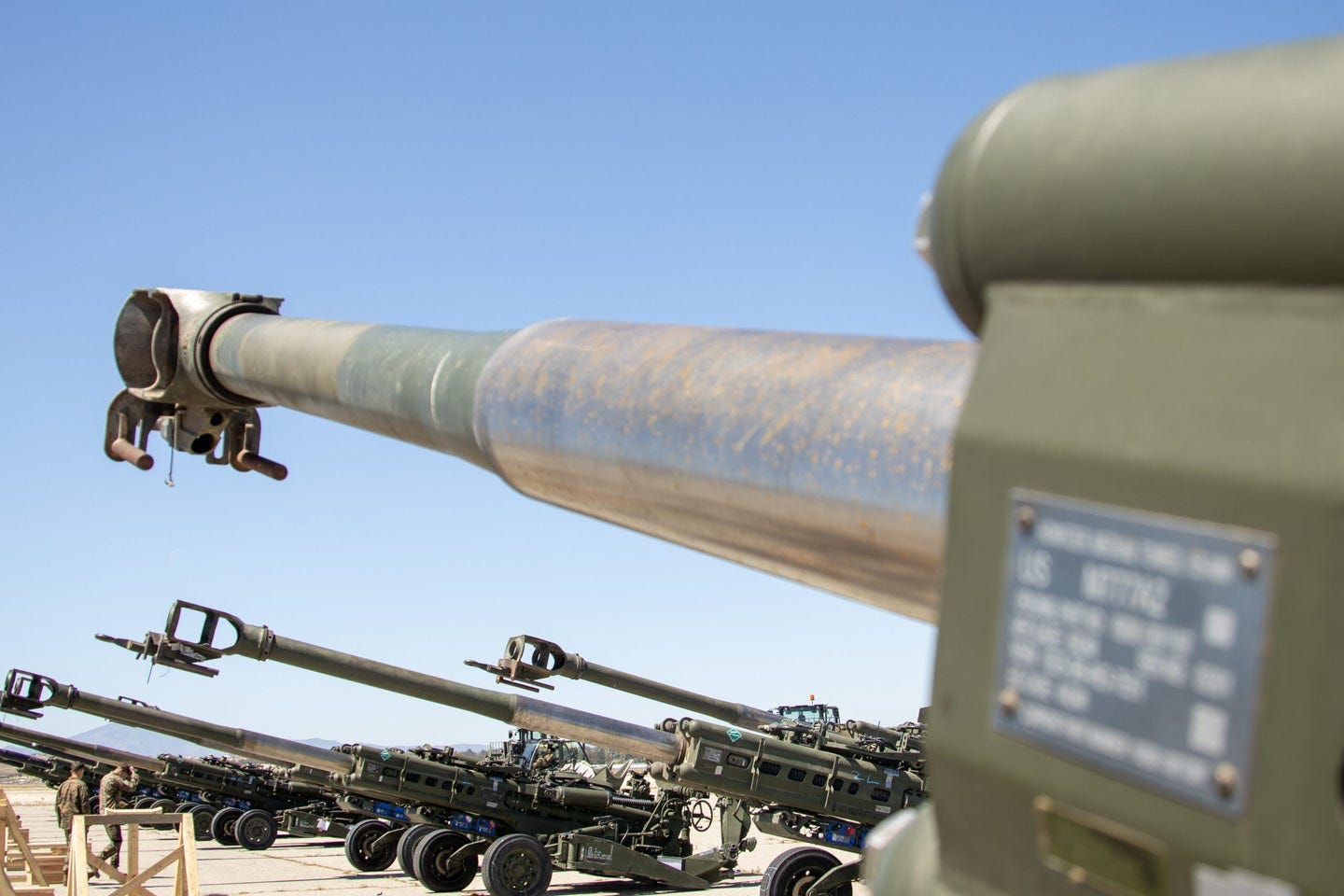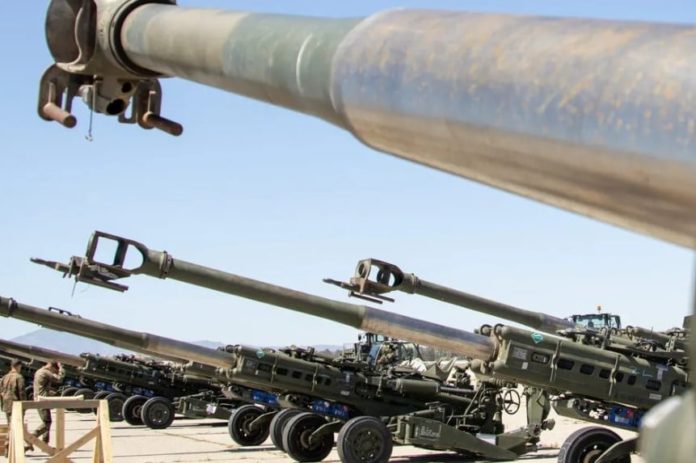
Let us start with the fact that Russia is firing 4 to 5 times more artillery shells than Ukraine every day:
Russia is firing a staggering 20,000 artillery rounds per day, a senior U.S. defense official estimated, while Ukraine is firing from 4,000 to 7,000 rounds daily.
The Ukrainians are quickly burning through their stockpiles of artillery rounds and other ammunition, including for their air defense systems, officials said.
So how is that working out? For starters, Ukraine is exhausting its stockpiles and the United States and NATO lack the industrial base to produce new supplies to fulfill Ukrainian needs and restore their own stockpiles.
Today we learn that the U.S. supplied howitzers are not very robust:The war in Ukraine has a rate of artillery shelling not seen in a war since the Korean War. That intensity is so high that it’s putting a strain on the artillery pieces themselves, with a third out of commission at any point.
That’s according to the New York Times, which is reporting that a large portion of the approximately 350 howitzers provided by Western nations to Ukraine — including 142 American M777 howitzers — are damaged, destroyed or simply breaking down from overuse. Citing multiple U.S. defense officials, the report said that repeated use is wearing down the barrels. The artillery pieces have to be taken out of service and sent to a repair center outside of Ukraine.
Given the far higher rate of fire by Russian artillery pieces, logic suggests that Russia should be running into the same problem. It is not. Part of the explanation may be that Russia has far more artillery pieces than Ukraine and those systems are not being stressed to the same degree that the Ukrainian pieces are experiencing. It also is possible that the Russians are producing superior artillery pieces that withstand the stress of muliple fires.
I think one cause for the poor performance of the U.S. produced artillery pieces is a consequence of the U.S. defense procurement process. During the last 40 years the United States has not had to fight a peer that could fire back with comparable rates of fire. As a result, the standard of performance specified in the request for proposal submitted to the U.S. defense contractors did not envision the rate of fire that the artillery pieces are doing on a daily basis in Ukraine. The defense contractors produced an artillery piece that met the minimum standard. It would appear that the 155 mm artillery piece was not required to perform at a maximum level.
As I noted in a previous piece, just because the United States buys expensive weapons and spends billions more than Russia does not mean that the weapons are qualitatively better. The U.S. political system provides incentives to the U.S. Department of Defense to produce costly weapons as long as the systems approved by Congress provide tangible economic benefits to the constituents of those members of Congress. Financial contributions by those defense corporations to members of Congress provide a lubricant for getting programs produced that may not make tactical sense on the battlefield. The costly F-35 fighter is a prominent example.
If Ukraine falters in its ability to maintain its existing level of fire along the battle front, it will be forced to retreat. Artillery has been one of the few weapons that has kept Ukraine in the fight. Ukraine has no air power — i.e., fixed wing combat fighters and helicopters — to provide close air support and their supply of battle tanks is being reduced every day.
Ukraine’s situation is made more dire because neither the U.S. nor NATO have an ample supply of new howitzers to send to Kiev.
Don’t think of America as Uncle Sam. I think Old Mother Hubbard is a more apt comparison. The cupboard is bare.


